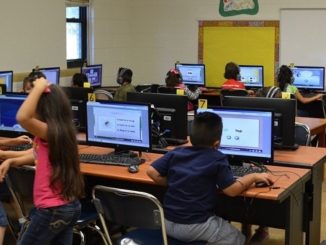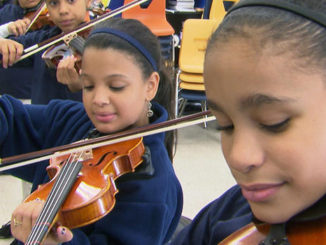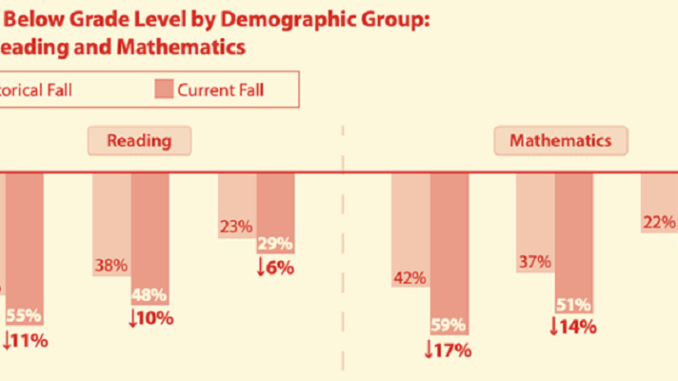
More than half of third grade students in predominantly Black and Latino schools are testing two or more grade levels behind in math.
by Marianna McMurdock | The74
This article was originally published at The74
Despite promises to focus on the growing racial and income divide among the nation’s students, new fall testing data show academic gaps have worsened, falling heaviest on some of the most vulnerable children.
While education researchers have sounded the alarm for more than a year — that pandemic learning hurts low-income students and students of color most severely — recent scores suggest education solutions cannot come fast enough.
“More students are two or more grade levels below their actual grade level this fall than before the pandemic began,” according to Curriculum Associates’ November “Understanding Student Learning” report, which analyzed 3 million students’ fall 2021 i-Ready scores against averages from 2017-19.
“This means that teachers will not only have fewer students beginning the school year on grade level, but they will also have more students in need of intensive intervention and support.”
In both math and reading, fewer students are ready for grade level work — across all first through eighth graders.
Most concerning was the report’s finding that the pandemic has been especially detrimental for four groups: students beginning conceptual math in early middle school; students learning to read; students in predominantly Black and Latino schools; and students in lower-income zip codes.
More than half of third grade students in predominantly Black and Latino schools are testing two or more grade levels behind in math.
And for children learning to read in second and third grade, 7 to 9 percent more students are two or more grade levels behind as compared to pre-pandemic levels. These rates are even higher for students in lower-income and predominantly Black or Latino schools.
Here are four key findings from the report.
For some visuals, only third grade is spotlighted as researchers say it’s a pivotal year for student learning, and one that can help predict high school outcomes.
1. Roughly half of third graders in predominantly Black and Latino schools are 2+ grade levels behind in math and reading — 11-17% more than pre-pandemic.
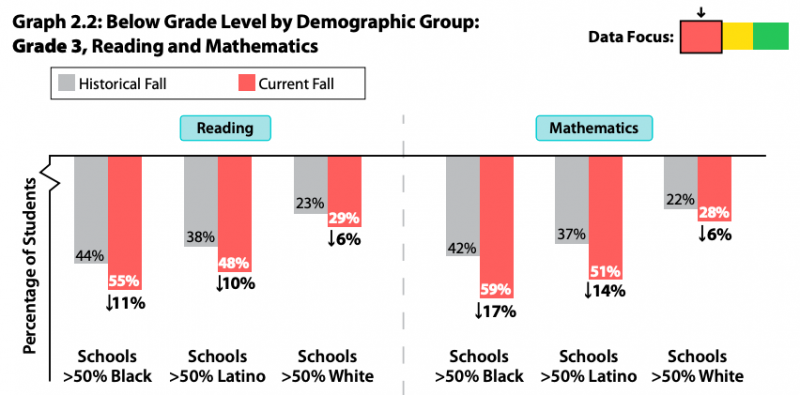
Schools with the highest proportions of Black students have experienced the starkest learning gaps in third grade, faring slightly better with reading over math.
As compared to pre-pandemic rates, 17 percent more students in predominantly Black schools are now two or more grade levels behind. The majority of students in predominantly Black schools, 59 percent, test below grade level in math.
2. 49% of third graders in lower-income areas are 2+ grade levels behind in reading and math — 10-12% more than pre-pandemic.
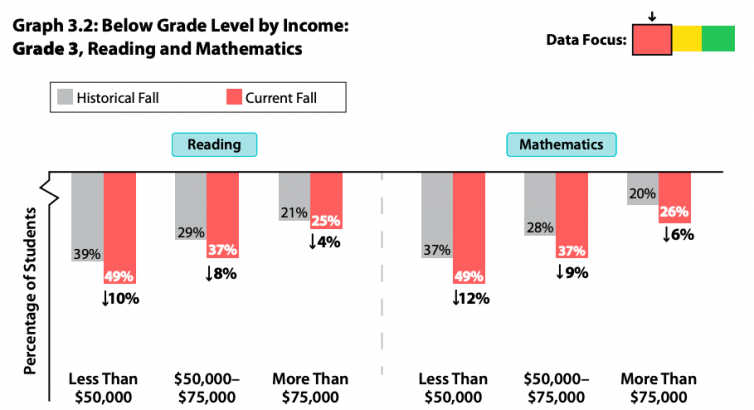
Unfinished learning is most stark in lower-income areas, but drops are across the board. In areas where families earn an average more than $75,000, roughly a quarter of students are two or more grade levels below. For areas with average incomes less than $50,000, there are double the amount of students below grade level.
Disparities by income may corroborate concerns of inequitable access to technology, tutoring and one-one support.
3. In reading, early elementary schoolers appear most impacted by the pandemic. 9% more second graders are 2+ grade levels behind.
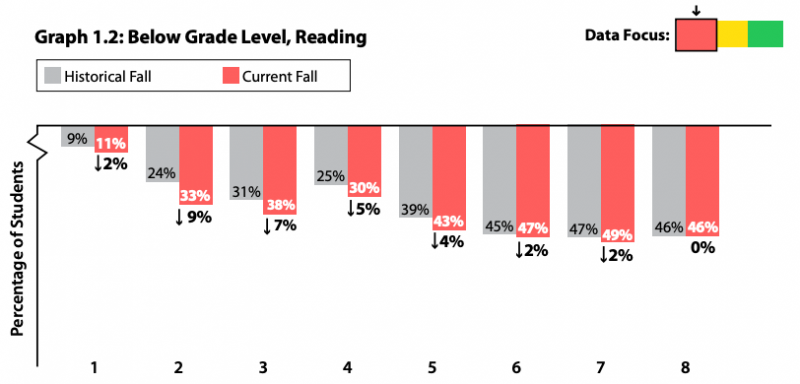
The greatest changes from pre-pandemic levels are for second through fourth graders, when many children learn key reading skills.
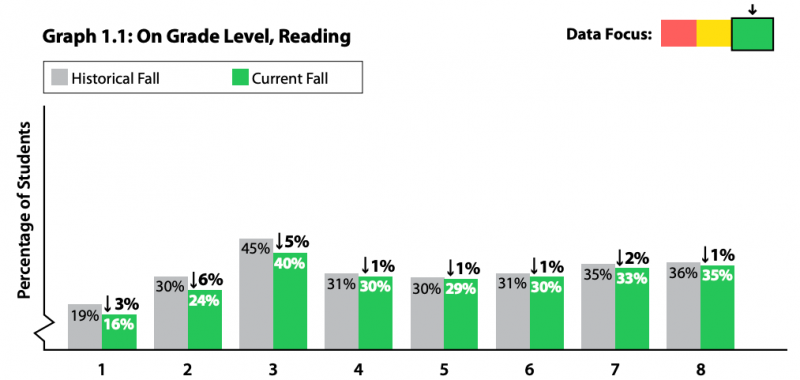
Upper-elementary and middle schoolers, who typically already know how to read and write longer texts, are testing closer to pre-pandemic levels. Still, only about a third are at or above grade level benchmarks.
4. In math, upper elementary and early middle school students appear most impacted by the pandemic. From second to sixth grade, 10% more students are 2+ grade levels behind.
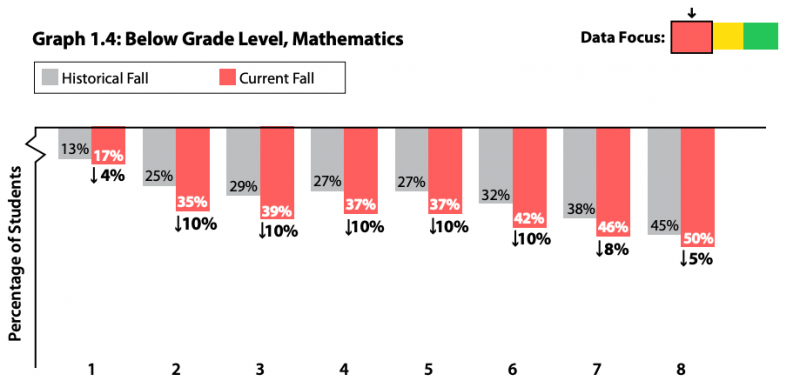
The proportion of students behind grade level increases as students continue through middle school — this year 50 percent of 8th graders, for instance, will require intensive support to get back on track.
Part of the reason may be due to content differences, according to Curriculum Associates’ analysis. Algebraic and conceptual thinking, introduced as students leave elementary school, is typically harder for students to grasp than number fluency in earlier grades.
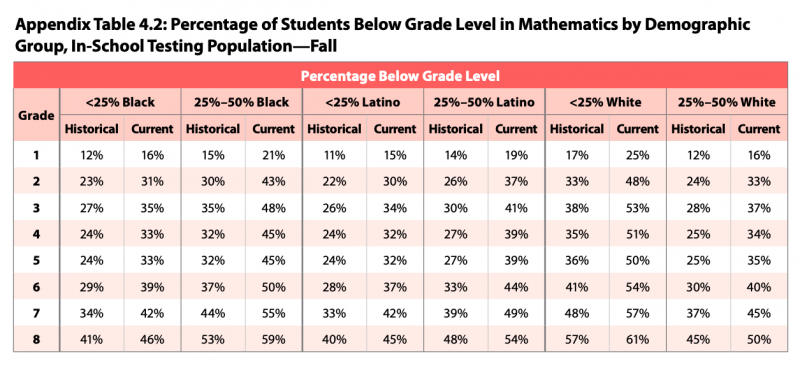
These findings are consistent across racial backgrounds; sixth through eighth graders testing below grade level at higher rates than their peers in earlier grades.
.

